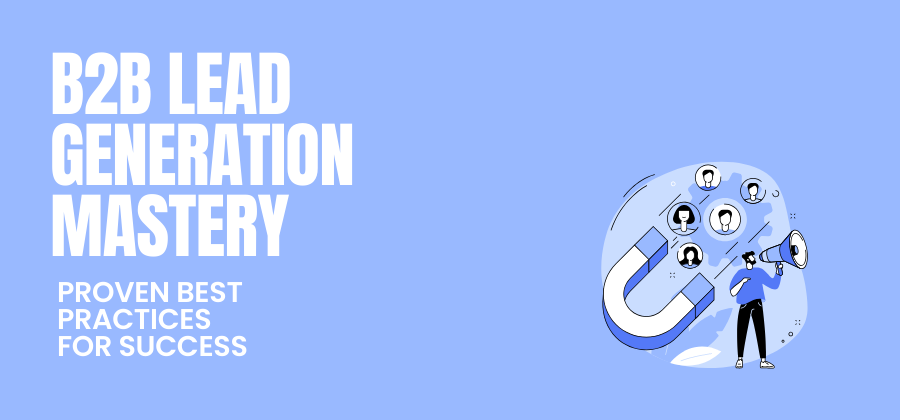
Matrix Marketing’s
LeadFinder
tool is designed to streamline this process, helping you quickly and efficiently generate qualified leads. By combining advanced data analysis and targeted marketing techniques, LeadFinder enhances your B2B lead generation efforts and ensures you capture leads that matter.
Understanding B2B Lead Generation
At its core, B2B lead generation
is about attracting potential customers who are genuinely interested in your offerings. These leads move through the sales funnel when appropriately nurtured and convert into paying customers. Effective lead generation
isn’t just about the quantity of leads but about finding quality prospects that match your business’s ideal customer profile.
Best Practices for B2B Lead Generation Success
Define Your Ideal Customer Profile (ICP)
One of the most critical steps in successful B2B lead generation
is identifying your Ideal Customer Profile (ICP). Your ICP should be a detailed description of the companies and decision-makers most likely to benefit from your products or services. This helps narrow your focus and ensures that your lead generation efforts target the right audience. Consider factors like:
- Industry
- Company size
- Geographic location
- Pain points
- Job titles of decision-makers
Use Data-Driven Targeting
B2B lead generation
relies heavily on data. With tools like LeadFinder from
Matrix Marketing,
businesses can access detailed databases that provide valuable insights into their target market. Using data-driven targeting allows companies to identify trends, uncover potential leads, and engage with the right prospects. Leverage demographic, firmographic, and behavioural data to segment your audience and personalise your outreach efforts.
Optimise Your Website for Lead Capture
Your website is often the first point of contact for potential leads, making it a vital asset in your lead-generation
strategy. Ensure your website is optimised to capture leads by including:
- Clear calls to action (CTAs)
- Easy-to-use forms
- Valuable lead magnets such as eBooks, white papers, or free trials
- Chatbots or live chat features for real-time engagement
Make sure your website is mobile-friendly and loads quickly to enhance user experience and reduce bounce rates.
Leverage Content Marketing
Content marketing is one of the most powerful tools in a B2B lead generation
strategy. By creating valuable and informative content, you can attract prospects and establish yourself as an authority in your industry. Content types to consider include:
- Blog posts
- Case studies
- Webinars
- Podcasts
- Video tutorials
- Infographics
Ensure your content aligns with your ICP’s pain points and challenges. To reach a wider audience, distribute your content across various channels, including social media, email, and partner websites.
Implement Account-Based Marketing (ABM)
Account-based marketing (ABM) is a highly targeted approach that focuses on a select number of high-value accounts. By personalising your messaging and outreach, you can more effectively engage decision-makers from these key accounts. ABM allows for deeper, more meaningful connections, increasing the likelihood of conversion.
Use Email Marketing to Nurture Leads
Email marketing remains a cornerstone of B2B lead generation. It allows businesses to nurture relationships with potential clients over time. Implement drip campaigns to provide relevant, timely content to your leads, keeping them engaged throughout the buyer’s journey. Personalise your emails, segment your lists, and always provide clear CTAs that guide leads to the next step.
Leverage LinkedIn for Lead Generation
LinkedIn is a goldmine for B2B lead generation,
offering a platform where professionals network and seek solutions. With LinkedIn’s advanced search filters, you can identify leads based on their industry, job title, and company size. Use LinkedIn’s InMail, connection requests, and content sharing to engage with prospects. Additionally, LinkedIn Ads offer targeted lead generation
campaigns that can yield high-quality leads.
Deploy Paid Search and Social Media Ads
Paid advertising on platforms like Google Ads, Facebook, and LinkedIn can complement your organic lead generation
efforts. By using highly targeted keywords and audience criteria, you can drive traffic to your landing pages and capture high-quality leads by using highly targeted keywords and audience criteria. Make sure to:
- Design compelling ad copy
- Use attention-grabbing visuals
- Direct leads to a dedicated landing page optimised for conversions
Host Webinars and Virtual Events
Webinars and virtual events are highly effective for attracting and engaging leads. By offering valuable insights and expertise on industry-related topics, you can position your company as a thought leader while capturing contact information from attendees. Promote your webinars across social media and email campaigns to maximise reach.
Measure and Optimise Your Lead Generation Efforts
Consistently measuring the success of your lead generation efforts is key to refining and optimising your strategy. Track metrics such as conversion rates, lead quality, cost per lead, and engagement levels to understand which tactics are delivering the best results. Tools like LeadFinder allow you to analyse data and adjust your campaigns to improve ROI.
FAQs about Lead Generation
What is lead generation?
Lead generation
is the process of attracting and converting potential customers (leads) who have shown interest in your product or service.
Why is lead generation important for B2B companies?
Lead generation is essential for B2B companies. It helps build a pipeline of potential customers, enabling consistent sales and business growth.
What is the difference between a lead and a qualified lead?
A lead is any individual or company that shows interest in your product or service, while a qualified lead is someone who meets specific criteria that make them more likely to become a paying customer.
How does content marketing help with lead generation?
Content marketing helps attract potential leads by providing valuable and informative content that addresses their pain points, ultimately guiding them to engage with your brand.
What is Account-Based Marketing (ABM)?
Account-Based Marketing (ABM) is a targeted marketing strategy where businesses focus on specific high-value accounts, personalising their outreach to increase conversion rates.
How can I optimise my website for lead generation?
You can optimise your website for lead generation by using clear CTAs, lead capture forms, and valuable lead magnets like eBooks or white papers. Ensuring your site is mobile-friendly and user-friendly also improves lead capture rates.
What tools can I use for B2B lead generation?
Tools like Matrix Marketing’s LeadFinder can help streamline the lead generation process by providing detailed data and insights, enabling businesses to identify and engage with qualified leads.
Contact Matrix Marketing today
Effective B2B lead generation
is a continuous process that requires a mix of targeted strategies, data-driven insights, and consistent nurturing. By implementing these best practices, businesses can attract high-quality leads that are more likely to convert into loyal customers. Tools like Matrix Marketing’s
LeadFinder make this process even more efficient, helping businesses generate qualified leads quickly and effectively.
Contact us
today to learn how Matrix LeadFinder can transform your lead generation
efforts.

In today’s fast-paced sales environment, speed is everything. The longer a deal drags on, the greater the risk of losing the prospect’s interest—or worse, losing them to a competitor. So, how do top-performing sales teams close deals faster? The answer lies in data-driven sales strategies. Why Data-Driven Sales Matter Gone are the days of cold calls and gut-feel decision-making. Sales teams that leverage data outperform their peers by identifying the right prospects, personalising their outreach, and optimizing their sales process. Here’s how: 1. Target the Right Prospects Not all leads are created equal. A data-driven approach helps sales teams prioritise high-value prospects based on factors like industry, company size, buying intent, and engagement history. Tools like MM Online’s LeadFinder make it easy to filter and find decision-makers who are most likely to convert. 2. Personalise Every Interaction Prospects expect personalised communication. With access to accurate business intelligence, sales reps can tailor their messaging to address a lead’s specific pain points, needs, and industry challenges. A personalised pitch isn’t just more engaging—it’s more effective. 3. Optimise Sales Efforts Data helps sales teams track and analyse their performance, identifying which strategies work best. By understanding what’s driving conversions, sales managers can fine-tune their approach, allocate resources efficiently, and eliminate time-wasting activities. 4. Shorten the Sales Cycle With the right data, sales teams can anticipate objections, prepare solutions in advance, and move deals forward faster. Knowing when and how to follow up based on behavioral insights ensures that no opportunity slips through the cracks. 5. Improve Forecasting and Decision-Making Data-driven sales enable businesses to make informed decisions, improving sales forecasts and pipeline management. Instead of relying on guesswork, teams can track trends, measure success rates, and adjust strategies in real time. The Competitive Edge of MM Online At Matrix Marketing, we understand the power of data-driven sales. That’s why MM Online provides sales teams with realiable and actionable business intelligence—so you can spend less time searching for leads and more time closing deals. With features like iTAM, ALP, POPIFix, P2P , and Industry & Organigram Reports, MM Online equips sales professionals with the insights they need to make every interaction count. Ready to Close Deals Faster? If you’re still relying on outdated sales methods, it’s time for a change. A data-driven approach can accelerate your sales cycle, boost conversions, and give you the competitive edge you need. Want to see it in action? Book a demo with us today!

At Matrix Marketing, we get it—every industry has its own unique set of challenges. That’s why MM Online is built to give you exactly what you need to crush it. Here’s how we help businesses in different sectors stand out and win: 🔹 IT & Telecommunication/Office Automation We’ve done the homework for you—1,200+ corporate IT end users, their hardware preferences, and printer brand choices. This gives you a competitive edge by showing your prospects you know their business inside and out. Show up with insights they didn’t even know they needed, and you’ll be ahead of the game from the first call. 🔹 Transport & Logistics Looking to target the right fleet owners? We’ve got you covered. Whether it’s Export/Import businesses or companies with Cars, Trucks, and LDVs, our data helps you find and focus on decision-makers who can take your business to the next level. 🔹 Automotive/Car Dealerships With our database of 60,000+ companies, including 32,000 in Gauteng, you’ll be talking to the right people in no time. We help you identify top decision-makers and companies with existing fleets, so your team can stop wasting time and start closing deals. 🔹 Recruitment & HR We make finding the right clients easy. With up-to-date data on executive vacancies and job titles across 60,000+ companies, you’ll be putting your team in front of the right prospects faster than ever. More time to focus on what matters—placing candidates and building long-term relationships. 🔹 IT Software for Recruitment & HR With insights into the top 2,000 corporate IT end users, we help you figure out exactly where to focus your efforts—avoiding guesswork and maximising opportunities in this competitive market. 🔹 Financial Services Want to know who has medical aid plans and which banks they’re using? We’ve got that data. Our research lets you target prospects based on age demographics and financial services needs to help you hit the right people with the right offer. Whatever your industry, MM Online is here to make sure your team is always one step ahead. Let’s chat about how we can give you the tools to crush your goals!

In today’s fast-paced sales environment, adaptability is key to success. That’s why MM Online isn’t just a static tool—it’s designed to evolve with your needs. Whether you’re building a pipeline, refining your strategy, or needing accurate data for decision-making, MM Online is the solution that’s flexible and built with your sales goals in mind. Here’s how MM Online adapts to the unique needs of your business: 1. Customisable Reporting Sales teams often need data that speaks to their unique challenges. MM Online offers customisable reports that let you drill down into the specific metrics that matter most to you. From tracking lead generation to monitoring sales performance, you can tailor your reports to focus on what’s important for your success. 2. Dynamic Industry & Organigram Reports Industry insights are crucial to staying ahead of the competition, and MM Online's Industry & Organigram Reports make sure you're always in the know. These reports are constantly updated, so you can rely on them for fresh, relevant information. Plus, they provide a clear view of company structures, so you can target the right people and build relationships that drive results. 3. iTAM for Targeted Lead Identification With iTAM (Intelligent Target Account Management), MM Online helps you find and track the most promising leads based on your unique criteria. No more wasting time on leads that don’t fit your ideal profile. iTAM’s targeted approach ensures your efforts are focused on the accounts that have the highest potential. 4. P2P for Seamless Sales Process Integration Sales workflows can often be disjointed, leading to lost opportunities or inefficiencies. That’s where P2P (People to People) comes in. MM Online integrates directly into your existing sales processes, ensuring smoother communication between your team and your prospects. By streamlining your workflow, P2P helps you maintain a steady rhythm and close deals faster. 5. ALP for Smarter Decision Making The ALP (Advanced Lead Profiling) feature in MM Online gives you deeper insights into your leads. It looks at a variety of factors—such as company size, industry trends, and engagement levels—to create a more comprehensive lead profile. With this information, you can make smarter, data-driven decisions that increase the likelihood of closing deals. 6. Constantly Changing We understand that your needs are always evolving, and so is the sales landscape. MM Online is designed to grow alongside your business.As your business grows and the industry shifts, we’ll introduce new features and refine existing tools to help you stay on track with your goals. In Conclusion: MM Online Is Built For You MM Online’s ability to adapt to your specific needs makes it an invaluable asset in your sales toolkit. With its customisable features, proactive updates, and deep insights, MM Online supports your team in achieving higher productivity and success. Ready to see how MM Online can adapt to your business? Start using it today, and let’s build success together!
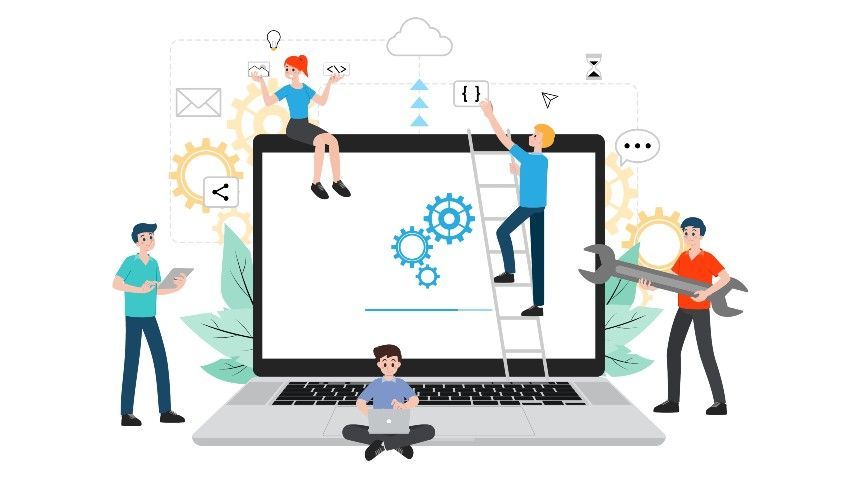
Sales is a numbers game—but that doesn’t mean your team should spend hours manually searching for leads, crafting outreach emails from scratch, or chasing cold prospects. That’s where sales automation comes in. When done right, it doesn’t just save time— it helps you scale, reach the right prospects faster, and close more deals. What is Sales Automation? Sales automation is about using technology to handle repetitive tasks, so your team can focus on selling, not admin work. From lead generation to follow-ups , automation ensures you’re always talking to the right people at the right time—without lifting a finger. The Biggest Bottleneck? Finding the Right Prospects Most sales teams waste too much time on the wrong leads. ❌ Cold calling companies that don’t fit your ideal customer profile ❌ Manually searching LinkedIn for decision-makers ❌ Sending emails to outdated or incorrect addresses This is where LeadFinder makes automation work for you. How LeadFinder Supercharges Sales Automation 💡 Step 1: Find Your Ideal Prospects—Instantly Instead of spending hours searching for companies and contacts, LeadFinder automatically delivers a list of decision-makers that match your ideal customer profile. 📍 Filter by industry, location, company size, and more —so you’re only reaching out to prospects who actually need what you sell. 💡 Step 2: Get Verified Contact Information No more emails bouncing back or dialing disconnected numbers. LeadFinder ensures your outreach lands in the right inbox or on the right phone line. 💡 Step 3: Automate Your Outreach Once you have high-quality leads, you can plug them into your sales automation tools: ✅ Email sequences ✅ LinkedIn messaging ✅ CRM workflows With LeadFinder feeding accurate leads into your sales pipeline, your automation strategy actually works—because you’re reaching the right people. Why Sales Automation + LeadFinder = More Deals Closed 🔹 Less Time Prospecting, More Time Selling – No more digging through outdated lists. 🔹 Higher Response Rates – Verified contact data means more replies and fewer wasted emails. 🔹 Faster Follow-Ups – Automate touchpoints to stay top-of-mind with prospects. 🔹 Better ROI – Sales teams that automate generate 30% more revenue on average. The Bottom Line Sales automation is only as good as the data feeding into it. If your team is struggling with low response rates or wasted outreach, the problem isn’t automation—it’s the leads. That’s why LeadFinder is the missing piece in your sales automation strategy. It puts the right prospects in front of you—so you can sell smarter, not harder. Ready to scale your outreach? Let’s talk about how LeadFinder can help!
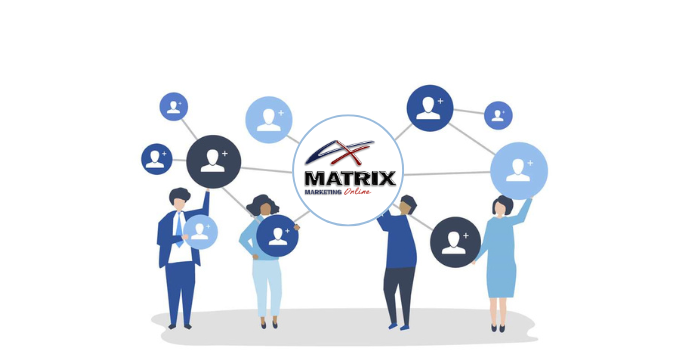
The Struggle is Real Every salesperson knows the struggle of finding the right prospects. Cold calling feels like a shot in the dark because most outdated databases lead to dead ends. You need leads that are fresh, relevant, and ready for engagement. That’s where MM Online changes the game. What is MM Online? MM Online is the ultimate B2B prospecting tool that gives you direct access to a verified, up-to-date business database tailored to the South African market. Whether you're looking for decision-makers, key industries, or niche markets, MM Online provides the data you need to connect with the right people at the right time. How MM Online Helps Sales Teams Win 1. Find the Right Leads Faster Forget endless Google searches. MM Online gives you access to a powerful searchable database with accurate contact details, company insights, and industry filters. You get quality leads in seconds, not hours. 2. Always Work with Fresh Data Outdated data wastes time and kills deals. MM Online ensures you have verified, real-time updates so you’re always engaging with the right contacts. 3. Save Time, Sell More Time is money. Instead of manually compiling lead lists, let MM Online do the heavy lifting. With fewer admin tasks, your sales team can focus on what really matters—closing deals. 4. Target Your Ideal Customer With advanced filters, you can narrow down your search to find prospects that fit your exact customer profile. Industry, location, company size—you name it, MM Online helps you refine your outreach. The Risk of Sticking to Old Methods If you’re still relying on outdated spreadsheets, generic email lists, or word-of-mouth leads, you’re missing out on high-value opportunities. Sales is about speed, efficiency, and accuracy, and without the right tools, you risk falling behind. Ready to Supercharge Your Sales? MM Online isn’t just a tool—it’s your secret weapon for prospecting success. More leads, better data, less admin—that’s the MM Online advantage. Want to see how it works? Book a free demo today and start closing more deals!

Every salesperson knows the struggle of finding the right prospects. Cold calling feels like a shot in the dark because most outdated databases lead to dead ends. You need leads that are fresh, relevant, and ready for engagement. That’s where MM Online changes the game. What is MM Online? MM Online is the ultimate B2B prospecting tool that gives you direct access to a verified, up-to-date business database tailored to the South African market. Whether you're looking for decision-makers, key industries, or niche markets, MM Online provides the data you need to connect with the right people at the right time. How MM Online Helps Sales Teams Win 1. Find the Right Leads Faster Forget endless Google searches. MM Online gives you access to a powerful searchable database with accurate contact details, company insights, and industry filters. You get quality leads in seconds, not hours. 2. Always Work with Fresh Data Outdated data wastes time and kills deals. MM Online ensures you have verified, real-time updates so you’re always engaging with the right contacts. 3. Save Time, Sell More Time is money. Instead of manually compiling lead lists, let MM Online do the heavy lifting. With fewer admin tasks, your sales team can focus on what really matters—closing deals. 4. Target Your Ideal Customer With advanced filters, you can narrow down your search to find prospects that fit your exact customer profile. Industry, location, company size—you name it, MM Online helps you refine your outreach. The Risk of Sticking to Old Methods If you’re still relying on outdated spreadsheets, generic email lists, or word-of-mouth leads, you’re missing out on high-value opportunities. Sales is about speed, efficiency, and accuracy, and without the right tools, you risk falling behind. Ready to Supercharge Your Sales? MM Online isn’t just a tool—it’s your secret weapon for prospecting success. More leads, better data, less admin—that’s the MM Online advantage. Want to see how it works? Book a free demo today and start closing more deals!
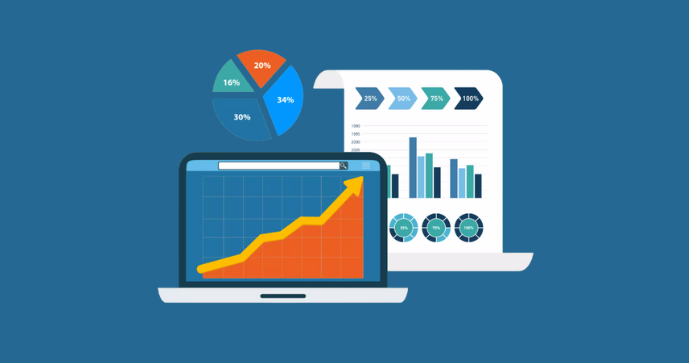
Your gut feeling might be great for picking a restaurant, but when it comes to sales, data is king. Sales teams that leverage data close more deals, forecast more accurately and build stronger pipelines. This blog will dive into why data-driven decisions give sales teams an unbeatable edge. In today’s competitive market, sales teams need every advantage they can get. Relying on intuition alone leads to missed opportunities and inconsistent results. Data-driven sales strategies provide measurable insights into customer behaviour, allowing businesses to refine their sales processes and increase efficiency. From tracking conversion rates to analysing prospect engagement, data enables sales professionals to focus their efforts where it matters most. Additionally, data can help forecast trends, allowing businesses to anticipate demand and adjust their strategies accordingly. Companies that effectively leverage sales data not only gain a competitive edge but also build stronger, long-lasting relationships with customers by personalising their approach. 1. How to Build a Winning Sales Funnel A leaky funnel means lost revenue. But what if you could plug those leaks and turn more leads into closed deals? A strong sales funnel is the backbone of a successful sales strategy. The first step is attracting the right prospects through targeted marketing efforts. Once leads enter the funnel, it’s crucial to nurture them through personalised outreach, follow-ups, and engaging content. Every touchpoint should add value and address potential objections. Common reasons for leaks in a sales funnel include weak lead qualification, slow response times, and lack of follow-ups. By identifying these gaps, businesses can implement strategies like automated lead scoring, CRM integration, and targeted email sequences to ensure prospects move smoothly from awareness to decision-making. 2. Unlocking the Power of Sales Automation Your sales team shouldn’t be drowning in admin work. With the right automation tools, you can free up time, improve efficiency, and scale like never before. This blog will explore how sales automation streamlines workflows and maximises productivity. Automation in sales isn’t about replacing people—it’s about empowering them. Repetitive tasks like follow-up emails, data entry, and appointment scheduling can be handled by automation tools, allowing sales teams to focus on high-value activities like relationship-building and closing deals. Companies that implement automation see increased efficiency, reduced human error, and faster deal closures. The key is selecting the right tools that align with your sales processes.

In the competitive world of B2B sales, generating qualified leads is the lifeblood of success. Matrix LeadFinder is designed to simplify the lead generation process, ensuring your business consistently gets access to high-quality prospects ready to engage with your offering. By harnessing the power of a pay-per-lead approach, Matrix LeadFinder makes lead generation cost-effective and improves your ability to focus on closing deals rather than spending time finding them. Boost Your B2B Sales Game with Matrix LeadFinder Matrix LeadFinder is more than just another tool in your sales toolkit. It’s a strategic, results-driven solution that helps businesses streamline their B2B lead generation efforts, increase efficiency, and scale without the need for additional overhead. This innovative solution delivers profiled leads using your target market data, allowing you to focus on qualified prospects who have already shown an interest in learning more about your offering. Let’s examine some of the key features that make Matrix LeadFinder a powerful tool for B2B sales. Pay-Per-Lead Solution One of Matrix LeadFinder's standout features is its pay-per-lead model. Unlike traditional marketing campaigns, where businesses pay for impressions or clicks with no guarantee of quality engagement, Matrix LeadFinder only charges for qualified leads. This ensures that your marketing budget is allocated more effectively, resulting in a lower cost per acquisition and a more targeted approach to lead generation. Benefits: ● Cost-Effective: Only pay for qualified leads that show genuine interest in your offering. ● Low Risk: Avoid spending money on campaigns that don’t produce meaningful results. ● Optimised for Conversion: Leads generated through this model are more likely to convert into paying customers. Targeted Lead Profiling Matrix LeadFinde r taps into its proprietary Matrix Marketing Online Directory to accurately profile your target audience. This enables the system to find leads that fit your ideal customer persona, ensuring that you engage with individuals and businesses genuinely interested in your services. Benefits: ● Highly Targeted: Leads are pre-screened based on your specific criteria, ensuring a higher likelihood of conversion. ● Customised Solutions: The platform tailors its profiling to meet your exact business needs. ● Efficient Lead Management: Spend less time sorting through low-quality leads and more time closing deals. LinkedIn® Profile Management Managing a professional LinkedIn® profile takes time, especially when engaging with potential leads. Matrix LeadFinder offers a LinkedIn® profile management service, helping businesses effectively connect and engage with prospects without the need to manually manage these tasks. By strategically engaging with your audience, the system builds relationships and delivers qualified leads who have expressed interest in your services. Benefits: ● Automated Engagement: Saves time and effort by automating prospect engagement. ● Professional Outreach: Ensures that your outreach is consistent, professional, and aligned with your business goals. ● Lead Nurturing: Matrix LeadFinder nurtures leads until they are ready to engage with your sales team. Scalability Matrix LeadFinder i s designed with scalability in mind. Whether you’re a startup or a large enterprise, the platform’s pay-per-lead model enables you to scale your lead generation efforts without the need for additional infrastructure or personnel. Benefits: ● Flexible Growth: Quickly scale your lead generation efforts as your business grows. ● No Additional Overhead: Enjoy growth without the additional costs associated with in-house lead generation teams. ● Customisable Plans:Adapt your lead generation efforts based on your current business needs. Improved ROI Matrix LeadFinder’s focus on delivering qualified leads helps businesses achieve better returns on their lead-generation investments. Since the platform only charges for leads that have already shown an interest in your offering, you can invest confidently, knowing that your marketing budget is being spent wisely. Benefits: ● Higher Conversion Rates: Focusing on qualified leads means that your sales team engages with prospects who are more likely to convert. ● Cost Efficiency: Pay-per-lead solutions reduce waste in your marketing spend, optimising ROI. ● Measurable Results: Easily track the effectiveness of your campaigns and adjust your strategy to maximise ROI. Comprehensive Lead Generation Strategy Matrix LeadFinder doesn’t just generate leads – it helps businesses develop a comprehensive lead-generation strategy tailored to their unique needs. Whether it’s through LinkedIn® profile management, audience profiling, or engaging with potential prospects, Matrix LeadFinder offers a holistic approach to driving qualified leads into your sales funnel. Benefits: ● End-to-End Service: From lead identification to engagement, Matrix LeadFinder provides a full-service solution. ● Time-Saving: Allows businesses to focus on closing deals while Matrix LeadFinder handles the front-end lead generation. ● Customisable Campaigns: Adjust your lead generation efforts based on your specific goals and target market. Why Choose Matrix LeadFinder? Matrix LeadFinder stands out in the crowded B2B lead generation market for several key reasons: ● Cost-effective: Businesses can access highly targeted leads at a fraction of the cost of traditional methods. ● Scalable: The pay-per-lead model allows for easy scaling without additional overhead. ● Improved ROI: Focus on leads that are more likely to convert, leading to a better return on investment. ● Low Risk: Only pay for successful leads, minimizing the risk of wasting marketing budgets on ineffective campaigns. FAQs About Matrix LeadFinder What is a pay-per-lead model? The pay-per-lead model means that businesses only pay for leads that have shown an interest in their product or service rather than paying for general marketing efforts like impressions or clicks. How does Matrix LeadFinder generate leads? Matrix LeadFinder uses its proprietary Matrix Marketing Online Directory to profile your target audience. The platform also manages your LinkedIn® profile to engage with potential leads and deliver qualified prospects interested in your offering. What industries does Matrix LeadFinder serve? Matrix LeadFinde r is designed to work across various industries, providing qualified B2B leads tailored to your specific market and customer base. How do you define a qualified lead? A qualified lead is someone who has demonstrated an interest in learning more about your offering and is ready to engage further. Matrix LeadFinder profiles these leads based on your target market and specific criteria. Can Matrix LeadFinder help me scale my lead generation efforts? Yes, the platform’s pay-per-lead model allows businesses to scale their lead generation efforts quickly and efficiently without the need for additional resources or infrastructure. What makes Matrix LeadFinder cost-effective? Since businesses only pay for successful leads, there is no wasted spend on low-quality prospects or ineffective marketing campaigns, making Matrix LeadFinder an affordable and efficient solution. Contact Matrix Marketing today Matrix LeadFinder is a game-changer for businesses looking to optimise their B2B sales efforts. By offering a targeted, pay-per-lead solution, companies can save time, reduce costs, and focus on what matters most — closing new business. Ready to take your B2B lead generation to the next level? Let Matrix LeadFinder handle the heavy lifting and deliver qualified leads who are ready to engage with your business! Contact us today to learn more about Matrix LeadFinder.
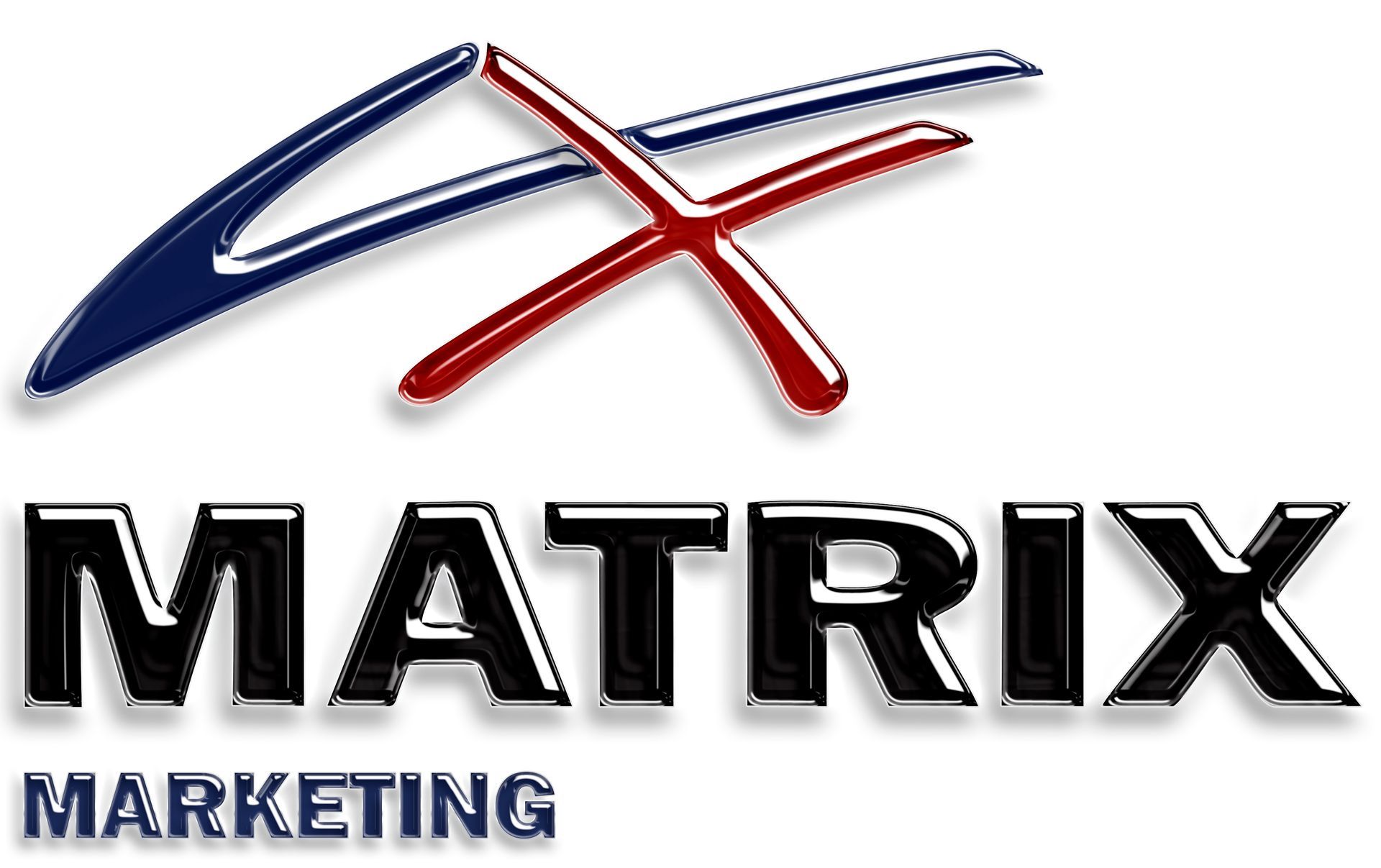
Your Trusted Partner for B2B Sales Growth In today’s competitive business landscape, generating qualified leads and driving sales growth is crucial for success. Matrix Marketin g is here to make that journey seamless. As a trusted partner for B2B sales growth, we empower businesses with cutting-edge lead generation solutions and advanced sales tools, enabling organisations to reach their full potential. Matrix Marketing takes a two-step approach using advanced data and artificial intelligence (AI) to identify ideal prospects, ensuring your sales team can focus on what they do best — closing deals. With our data-driven strategies, businesses can expect consistent results without expending additional effort, all at competitive prices. Empowering Businesses with Effective B2B Lead Generation Solutions Matrix Marketing (Pty) Ltd has established itself as a leader in the data consultancy space, catering to major clients across diverse industries. Whether you are in finance, manufacturing, IT, or any other sector, we offer tailored B2B lead generation solutions that help you connect with your target audience efficiently. We leverage data analytics and AI to create customised data sets that form the backbone of effective lead-generation activities. These datasets drive sales and enhance the overall effectiveness of your marketing campaigns. In today’s fast-paced world, businesses cannot afford to waste time and resources on low-quality leads. Matrix Marketing eliminates that concern by providing accurate, high-value prospects with the highest potential for conversion. Matrix Marketing’s Two-Step Approach to Lead Generation Data-Driven Insights Data is at the core of every successful lead-generation campaign. Matrix Marketing uses its expertise in data consultancy to analyse vast amounts of data and pinpoint the right prospects for your business. We ensure you always target the right audience by tapping into customised data sets tailored to your specific needs. Key Benefits: ● Reliable Targeting: With data-driven insights, Matrix Marketing ensures you reach the right audience, increasing the likelihood of closing deals. ● Industry-Specific Data: Each dataset is tailored to your industry, ensuring that you always work with high-quality leads. ● Reduced Wasted Effort: No more chasing after low-quality leads or spending time on irrelevant prospects. Artificial Intelligence (AI) for Smart Prospecting Artificial intelligence has transformed the way businesses identify prospects. Matrix Marketing leverages AI technology to streamline the prospecting process, allowing companies to focus on qualified leads most likely to convert. AI automates lead identification, ensuring that your sales team gets a steady flow of high-quality leads with minimal effort. Key Benefits: ● AI-Powered Lead Generation: The system identifies prospects based on patterns and behaviours, increasing the chances of conversion. ● Scalable Solutions: AI allows businesses to scale their lead generation efforts without additional overhead. ● Reduced Human Effort: With AI handling the heavy lifting, your sales team can focus on closing deals rather than spending time on manual prospecting. Why Choose Matrix Marketing? Matrix Marketing is more than just a data consultancy. It's a trusted partner for B2B sales growth. Here’s why businesses choose us for their lead generation needs: ● Trusted by Major Clients Across Industries: We have a well-established track record, serving clients across multiple industry sectors. Our experience working with well-known organisations means we understand businesses' unique challenges when generating leads in their specific industry. Whether you’re in healthcare, retail, or telecommunications, we can provide the right data-driven solutions for your needs. ● Customised Data Solutions: Not all businesses have the same needs, so Matrix Marketing takes a personalised approach to data consultancy. We tailor our data to suit the specific requirements of your sales and marketing teams, resulting in highly relevant lead generation that delivers quality prospects. ● Seamless B2B Lead Generation: Lead generation can be a time-consuming and complex process. Matrix Marketing simplifies this by handling everything from prospect identification to nurturing leads. Businesses that partner with us can expect a seamless experience, from data analysis to delivering actionable leads ready for engagement. ● Effortless and Cost-Effective Solutions: Matrix Marketing offers affordable, high-quality lead generation solutions. Our innovative two-step approach using data and AI means businesses can focus on closing deals rather than spending valuable time and resources on prospecting. Plus, our cost-effective solutions ensure that businesses of all sizes can afford to take advantage of our services. ● Sales Growth with Minimal Effort: Matrix Marketing’s lead generation solutions require little effort from your side. Our experts do the heavy lifting, allowing your sales team to focus on what matters—growing your business. With minimal effort, businesses can enjoy increased sales and growth. How Matrix Marketing Grows Your Sales Matrix Marketing understands that the key to B2B success is targeting the right prospects. Here’s how the company helps grow your sales: ● Targeted Lead Generation: The combination of data-driven insights and AI-powered prospecting ensures that your sales team only focuses on leads with the highest potential for conversion. ● Increased Efficiency: Our solutions are designed to save you time and resources, allowing your sales team to focus on closing more deals in less time. ● Scalable Solutions: Whether you’re a small business or a large enterprise, our scalable solutions grow with your company, ensuring consistent sales growth as your needs evolve. ● Improved ROI: With highly targeted leads and reduced wasted effort, businesses partnering with us enjoy a higher return on investment (ROI) for their lead generation efforts. FAQs About Matrix Marketing What industries does Matrix Marketing serve? Matrix Marketing works with various industries, including finance, manufacturing, healthcare, IT, telecommunications, and retail. The company tailors its data and lead generation strategies to meet the specific needs of each industry. How does Matrix Marketing generate leads? Matrix Marketing uses a two-step approach to generate leads. First, we gather data-driven insights from our proprietary data sets to identify potential prospects. Then, we use AI technology to streamline the lead identification process and ensure that businesses engage only with qualified prospects. Can Matrix Marketing help my business scale? Yes, Matrix Marketing’s solutions are designed to be scalable. Whether you want to grow your sales team or expand into new markets, we can help you scale your lead generation efforts without additional overhead. What is the role of AI in Matrix Marketing’s lead generation process? Matrix Marketing uses AI to automate lead identification and prospecting. This allows businesses to generate high-quality leads more efficiently while reducing the need for manual effort. How does Matrix Marketing customise its data solutions? Matrix Marketing tailors its data consultancy services to meet each client's specific needs. We work closely with businesses to understand their goals and target audience, then deliver customised data sets that drive effective lead generation and sales growth. Contact Matrix Marketing today Matrix Marketing is your trusted partner for B2B sales growth. Combining data-driven insights with AI-powered prospecting gives businesses the tools they need to succeed in today’s competitive market. Take the next step in your sales journey. Partner with Matrix Marketing and unlock the full potential of your B2B lead generation strategy! Contact us t o day to learn more.

In the ever-evolving landscape of sales and marketing, the definition of a great lead continues to adapt. As we move through 2025, new trends, technologies, and buyer behaviours are shaping how businesses define and identify high-quality leads. Here’s a look at the key characteristics of great leads in 2025 and how you can find them.
